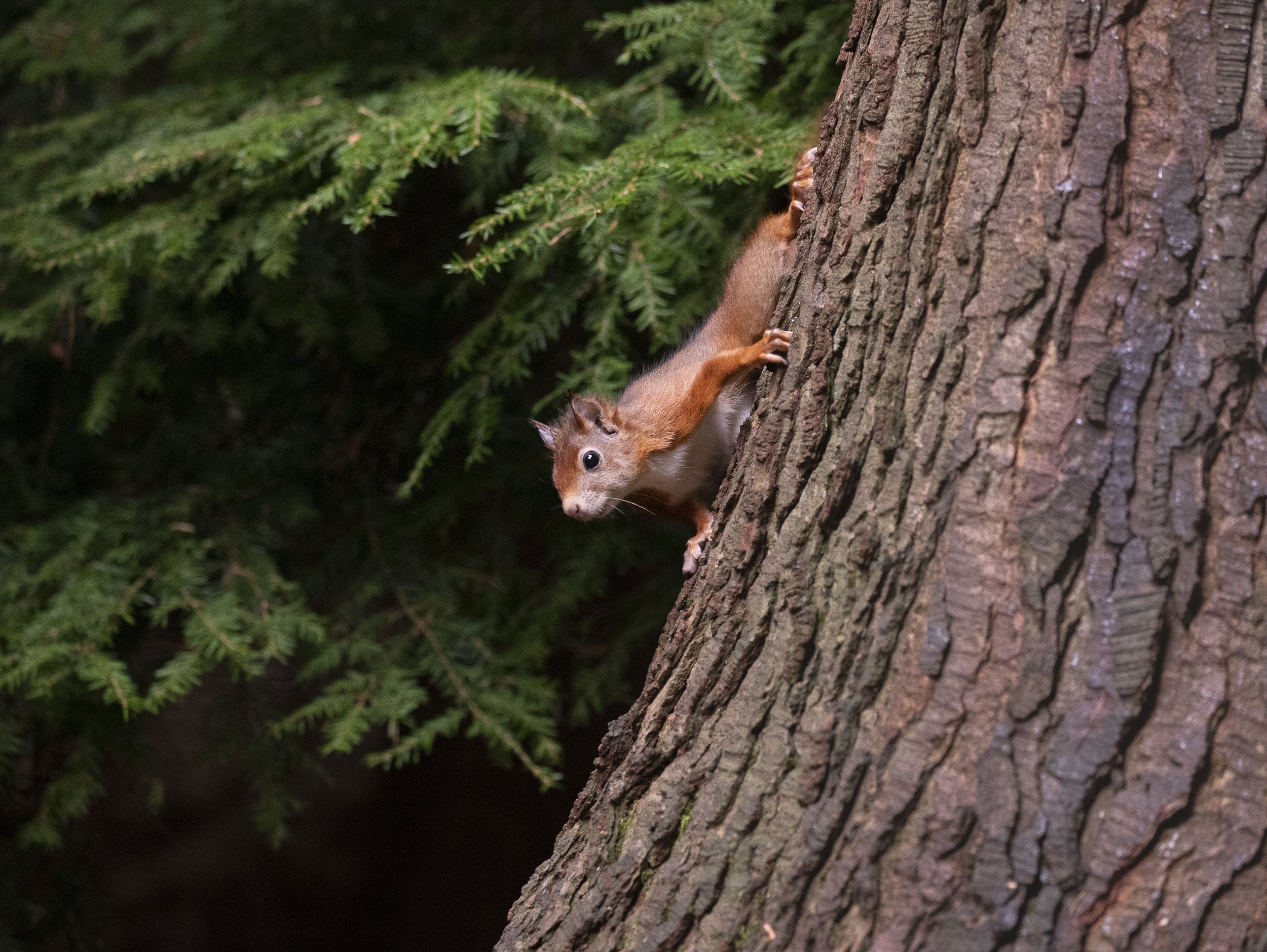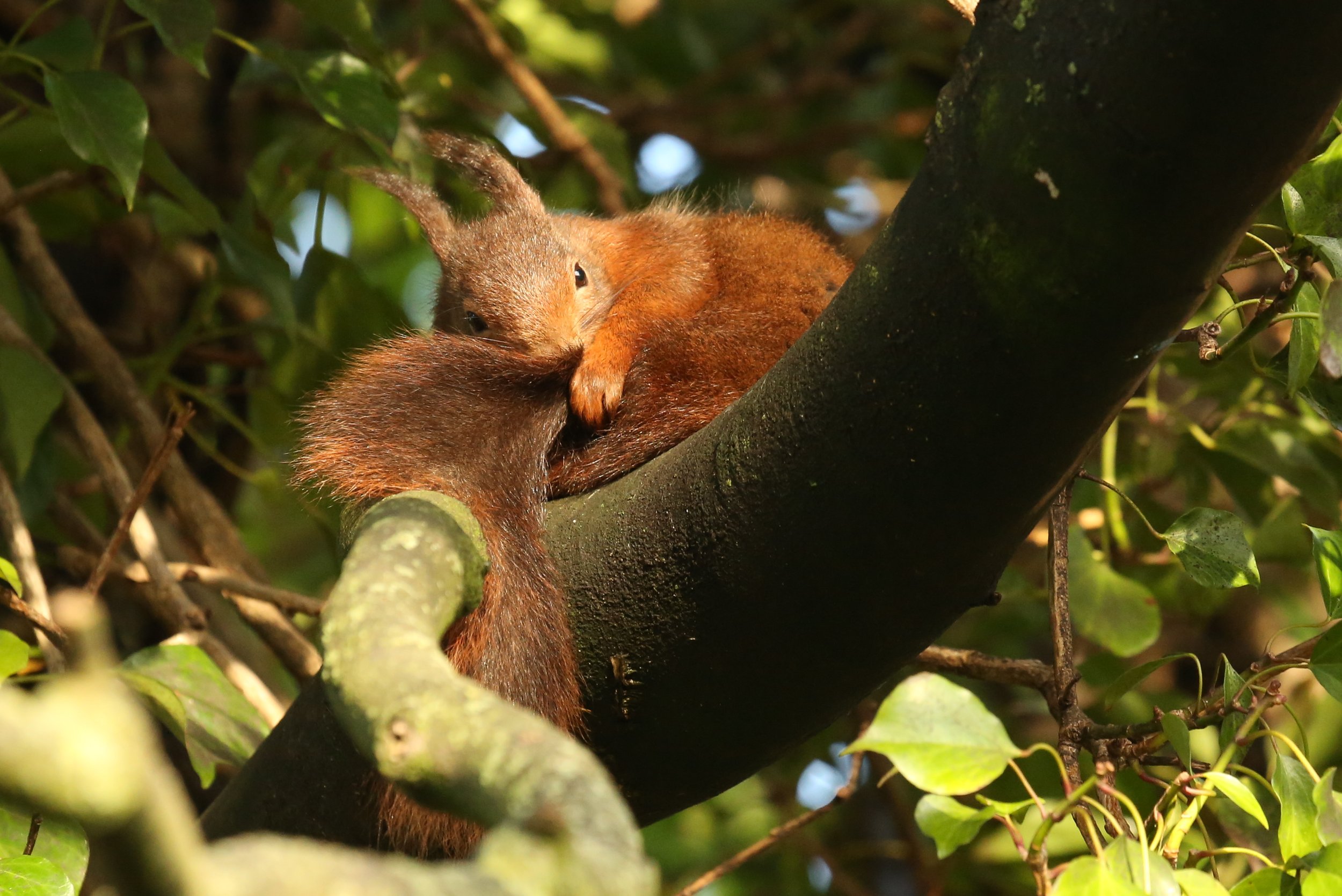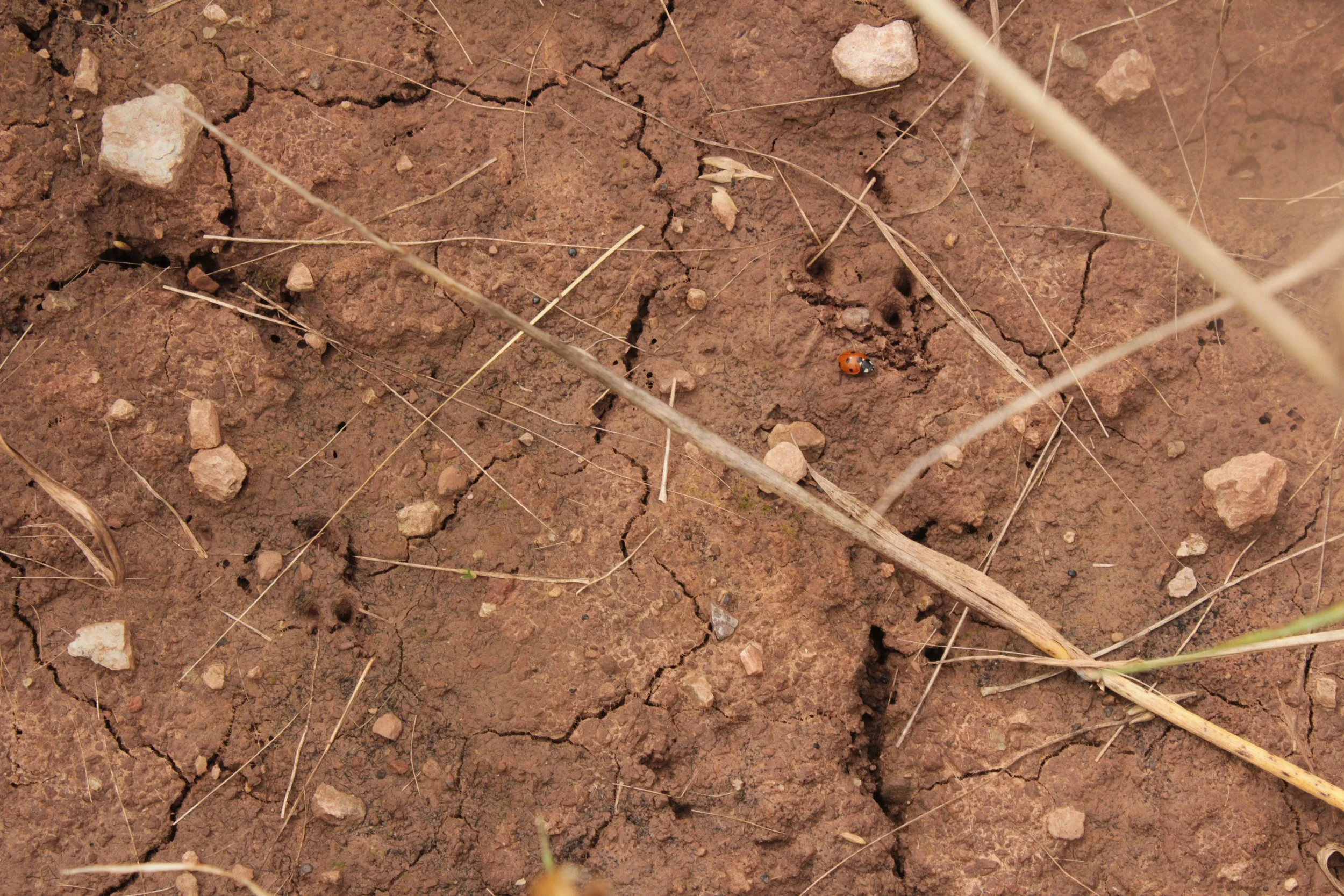Home / British mammals / Red squirrel
Red squirrel
Scientific name: Sciurus vulgaris
“Squirrels who bury their nuts in the ground lose more than half, because they cannot remember the place.”
– Beatrix Potter
These arboreal mammals can jump more than 2 metres! Unfortunately, their population has been decimated by the introduction of the invasive grey squirrel, which spreads the deadly squirrel pox disease.
Taxonomy chart
Animalia – Chordata – Mammalia – Rodentia – Sciruidae – Sciurus - S. vulgaris
Conservation status: UK Red List
GB: Endangered
England: Endangered
Scotland: Near Threatened
Wales: Endangered
Global Least Concern
Summary
Diet: Omnivorous. Tree seeds, tree flowers, shoots, mushrooms, fungi, bird eggs.
Habitat: Forests – both broad-leaved and conifer.
Size: Weight: up to 350g. Size: 18-20cm with a 17.5cm tail.
Lifecycle: Live up to 6 years. Females mature at 1. Breed from mid-winter to summer, having 2-3 kits a year, which are weaned at 10 weeks.
Conservation concerns: Invasive American grey squirrel outcompetes them and spreads fatal squirrel pox. Grey squirrel management and red squirrel reintroductions needed.
Terminology
Drey: The nest of a squirrel, usually a spherical mass of twigs and leaves in a tree.
Squirrel pox: A virus spread by grey squirrels to red squirrels, which grey squirrels can carry without contracting, but which is often fatal to red squirrels and can spread quickly through their populations.
Caching: A behaviour squirrels undertake where they store food underground for the future.
Immunocontraceptive: A drug which uses an animal’s immune system to stop it from reproducing.
Geography
In the British Isles, most red squirrels are found in Scotland, the north of England, a few parts of Wales, the Isle of Wight, and Ireland.
Red squirrels favour conifer forests and broad-leaved woodland, spending about three-quarters of their active time above ground in trees and shrubs.
Biology
Red squirrels can grow to around 18-20cm, with a tail 17.5cm in length. Juveniles weigh between 100-150g, whilst adults can weigh up to 350g.
Covered by a fur which can be bright ginger through to red and dark brown, or even black tinged with grey in winter, red squirrels sport ear tufts which become larger in mid-winter and disappear by the summer, as well as a bushy tail which can bleach white by late summer in some individuals. Red squirrels are perfectly adapted for their arboreal existence, with a large, bushy tail that helps them balance, and double-jointed ankles that allow their feet to face either forwards or backwards when climbing.
Red squirrels can live up to 6 years in the wild. They begin to breed in mid-winter and continue through the summer, depending on the weather and how much food is available. Whilst breeding, males will chase and follow a female who is more than one year old and ready to mate, making spectacular leaps through the tree canopy and spiraling up and down tree trunks. Females have one or two litters a year, usually of about 2-3 young, and wean their young at around 10 weeks.
Ecology
Red squirrels are omnivores and enjoy a variety of foods. Their main food sources are tree seeds, such as hazelnuts or conifer cones, but they also eat tree flowers and shoots, mushrooms, fungi from underneath tree bark, and occasionally bird eggs. To get through the winter, red squirrels will cache food underground in shallow holes, and even store fungi in tree crevices! However, squirrels still often suffer periods of food shortage, especially in the summer months such as July.
Red squirrels are diurnal – active during the daytime – though in summer, they may rest for an hour or two around midday. They build squirrel nests, called dreys, which are constructed from twigs in a tree fork above a whorl of branches close to the stem of a conifer or, less visibly, in a hole in a tree. Squirrels line their dreys with soft hair, moss and dried grass and often share dreys across the same or different days. Red squirrels’ main predators include pine martens, stoats, goshawks, dogs, cats, and foxes.
Conservation
Red squirrels are classified as ‘endangered’ on the UK Red List across Great Britain overall, and in England and Wales. Red squirrels are protected by law, and may not be intentionally trapped, killed or kept, or have their dreys disturbed except under license from Natural England (NE), Natural Resources Wales or NatureScot.
Red squirrels are endangered due to the human-caused introduction of the American grey squirrel between 1876-1929, as well as habitat loss. The grey squirrel has better foraging efficiencies than reds, causing them to outcompete red squirrels for food and habitat. In addition, grey squirrels carry squirrel pox virus which they are immune to but is fatal for red squirrels. This disease is the main cause of red squirrel decline across the British Isles as an outbreak can wipe out an entire population, causing lethargy, lack of coordination, ulcers, and swelling.
To mitigate the spread of squirrel pox, grey squirrel management consists of shooting and sometimes trapping individuals. More recently, alternative management methods are being researched, such as a fertility control method, whereby grey squirrels are lured into feeding boxes to take food spiked with an immunocontraceptive, a squirrel pox vaccine for both red and grey squirrels, and a gene drive for grey squirrels, where genes would be modified to enable sex-biasing, and new grey squirrels would all be born male. Additionally, pine marten reintroductions have been shown to reduce grey squirrel numbers; grey squirrels, having not co-evolved with pine martens as a natural predator, are less fearful of them than red squirrels and thus more easily predated on. As grey squirrel management increases, red squirrel reintroductions can also take place to boost populations.
History
Red squirrels have been present in the British Isles since the end of the last ice age.
They appear in folklore across Europe, such as in Scandinavian culture, where the Norse god ‘Ratatoskr’, who was a squirrel, was said to carry messages along the Tree of Life – mostly between the wise eagle at the top of the tree and the serpent who lay in the underworld within its roots.
In Ireland, red squirrels were also represented as messengers – the Irish warrior Queen Medb is often represented with squirrels on her shoulder, which acted as messengers between earth and sky. Some say that the UK used to be so forested that ‘a squirrel could run from Land’s End to John O’Groats without touching the ground once’.
In the early 20th century, red squirrels featured prominently in Beatrix Potter’s ‘Squirrel Nutkin’, where they are portrayed as being taunting and impertinent.
Unfortunately, the 20th century brought more than just stories of red squirrels. The arrival of grey squirrels from the USA between 1876-1929 led to red squirrels retreating to parts of Scotland, Wales, and the Isle of Wight, due to out-competition and the spread of the deadly squirrel pox virus.
Identifying and surveying
Footprints: Tracks can be seen in mud, sand and snow. Squirrels leave tiny tracks, which can be easily overlooked. Forefoot width 2.5cm, length 3.5cm, hind foot width 3.5cm, length 4.5cm.
Feeding signs: The red squirrel eats nuts, acorns, berries and the cones of conifer trees. They split acorns and hazelnuts and often leave rough, jagged edges. Pinecones are stripped but the top sections are left untouched.
Dreys: The nests of red squirrels (and grey squirrels) are known as dreys. They are spherical collections of twigs and leaves, approximately 30cm across and at least 6m above ground, usually located close to the trunk in branch forks. It is easier to observe these in winter, when there are fewer leaves on the trees. It is not possible to distinguish between red and grey squirrel dreys.
Surveying period: Squirrels can be surveyed year-round as they are active all year, however, their dreys are more easily seen in the winter.
Useful information
Red Squirrel Awareness Week - UK Squirrel Accord
https://scottishsquirrels.org.uk/
Red Squirrel Reintroduction Project - Trees for Life
England Red Squirrel Action Plan 2023-2028
Scottish Strategy for Red Squirrel Conservation 2015: https://scottishsquirrels.org.uk/wp-content/uploads/2024/03/Scottish-Strategy-for-Red-Squirrel-Conservation-June-2015.pdf
Red Squirrel Conservation Plan for Wales (review 2018) https://cdn.naturalresources.wales/media/691092/eng-red-squirrel-conservation-plan-for-wales.pdf
Frequently asked questions
-
No, neither red nor grey squirrels hibernate.
-
Both red and grey squirrels have been recorded eating bird eggs opportunistically, though this usually only occurs when other food sources are scarce.
-
Red squirrels bury food such as tree seeds underground over a wide area to eat during winter periods, but they sometimes forget every seed they’ve hidden. As a result, they help disperse seeds and therefore help new trees to grow.
-
Yes, red squirrels are listed on the UK Red List as ‘endangered’ in Great Britian, England, and Wales.
-
Red squirrels can swim, though this is rare.
Confusion species
Grey squirrel (Sciurus carolinensis)
Grey squirrels have grey fur which often has a brown tinge and can appear slightly red. Sometimes, red squirrel fur may appear grey. Grey squirrels have a larger head and body size. Red squirrels grow noticeable ear tufts in winter, which the grey does not have.
Identify sounds
Heard a curious animal sound but no idea whose making it?
Wildlife identification FAQ
Still not sure what you’ve found? Head over to our FAQ for an answer.








